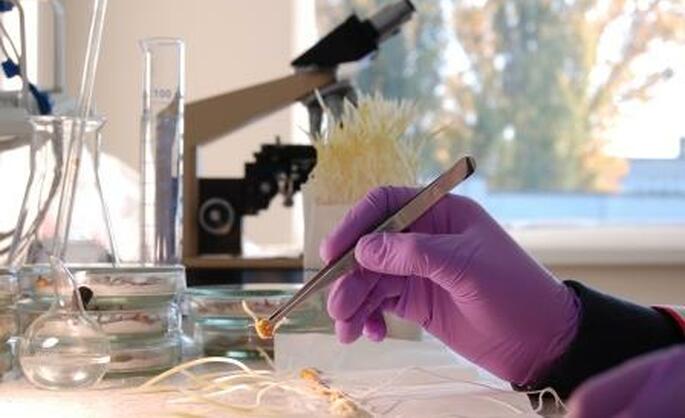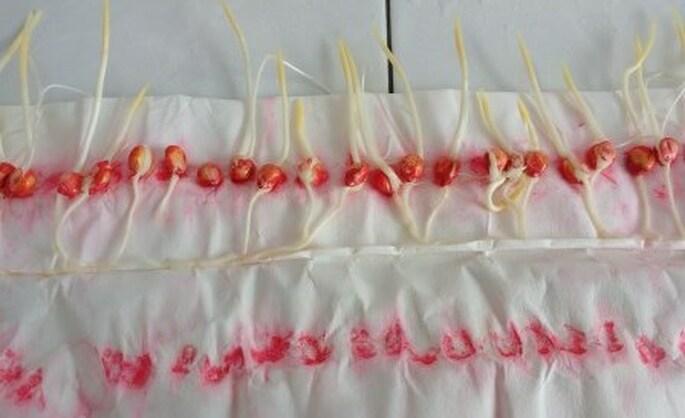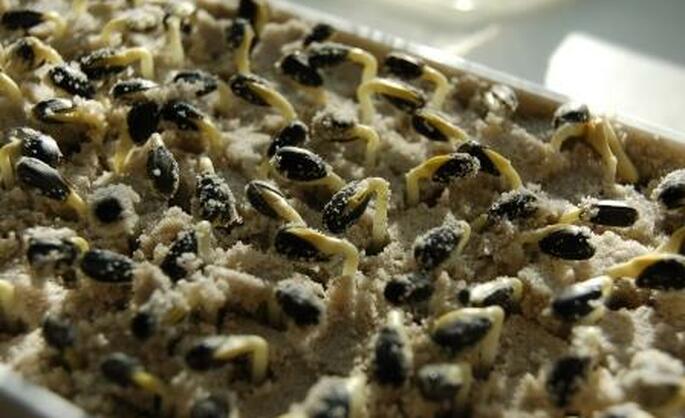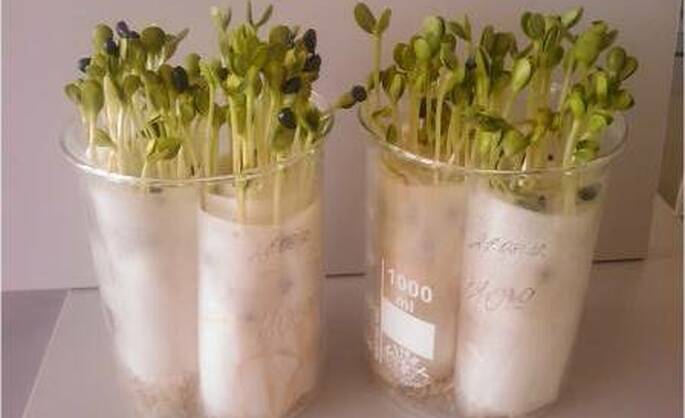What are the sowing qualities of seeds? Why do seeds lose their germination capacity and can last year's seeds be sown?
Seed quality is a set of seed indicators that characterize its suitability for sowing (germination, viability, moisture, purity, weight per 1000 seeds, germination energy, benignity, disease infection and pest damage).
Germination is undoubtedly the most important indicator of seed quality. The germination rate set by the standard ensures normal germination of seeds in the field and the formation of the required plant density.
Types of seed germination:
Laboratory germination of seeds - determined in accordance with DSTU 4138-2002 “Seeds of agricultural crops”. Methods of quality determination.
To determine it, four consecutive samples of 100 seeds are taken from the fraction of pure seeds and germinated in greenhouses on clean calcined sand or filter paper. The substrate used should be non-toxic and water without mineral impurities. The growing rooms are placed in thermostats, where the temperature is maintained at about 20°C for seeds of cold-resistant crops (wheat, rye, barley, oats, peas) and 20-30°C for heat-loving crops (corn, sunflower, soybeans). Seed germination is monitored daily for 7-10 days. Germination is expressed as a percentage of the number of germinated seeds to the total number of seeds sown.


You can determine the so-called “greenhouse germination” yourself. This indicator is determined at home, and it is always lower than the laboratory germination rate, as it is difficult to create ideal conditions for each crop. Hence the difference between the germination rate indicated in the seed document and the results of your test.


When you sow seeds in open ground, the conditions for seed germination will be even more severe, and this will be field germination.
Probably every agronomist has faced the problem of low seed germination. Yes, very often there is a lot of low-quality seed material on the market. But sometimes, when you buy quality seeds from a trusted supplier, you still face the problem of low germination. In this case, do not rush to blame the seed producer.
A number of factors that affect seed germination and what to do to avoid them
- To preserve germination, seeds should be stored in a cool, dry place protected from rodents and pests.
- Some fumigants can reduce seed germination.
- Seeds with a moisture content above 12% quickly lose their germination, regardless of other storage conditions.
- If the moisture content of the grain is 12% or less, it can usually be stored in unheated warehouses without the risk of winter frost damage. Care must be taken to ensure that the bags do not absorb moisture from the floor or otherwise. Therefore, we recommend storing the seeds on shipping pallets or in another way without contact with the floor.
- Storage at temperatures of 21°C and above has a negative effect on seed germination, while temperatures below 0°C have a positive effect.
- Air conditioning can lower the temperature and regulate humidity, maintaining a relative humidity of 55% and a temperature of +10°C in a sealed and well-insulated storage facility.
- Since seeds are a living organism, any mechanical injury reduces their viability and germination, respectively.
- If you plan to sow leftover seeds from previous seasons, you should remember that over the years, seeds lose their germination capacity. There is even such a term as seed durability (the ability to maintain germination for a long time). There is a distinction between biological and economic seed longevity. Biological longevity is the time during which at least some seeds germinate. Economic longevity is shorter - it lasts as long as germination meets the standard.
When you buy last year's seed from a seed producer or an official distributor, they must provide you with a document stating that the seed has been recertified and its sowing qualities meet the standard.
Germination rates for conditioned seeds in accordance with the State Standards of Ukraine
Crop | Germination, % minimum, seed category (PH 1-3) | DSTU |
Sunflower | 85 | DSTU 6068:2008 Sunflower seeds. Varietal and sowing qualities. Technical conditions |
Winter rape | 80 | DSTU 2240-93 Crop seeds. Varietal and sowing qualities. Technical conditions. |
Corn | 92 | |
Spring barley | 92 | |
Winter rye | 90 | |
Winter wheat | 92 | |
Sugar corn | 92 | DSTU 7160:2010 Seeds of vegetable, melon, fodder and spice and aromatic crops. Varietal and sowing qualities. Technical specifications. |
That's why, when preparing for the sowing season, you need to check not only the range and quantity of seeds in the storage facility, but also their quality, as the results indicated in the certificate also have their own validity period. For example, the certificate for corn seeds is valid for 12 months, and for sunflower seeds only 4 months.
We would like to draw your attention to the fact that it is better to determine the laboratory germination of seeds in specialized institutions, since determining germination at home does not always give a real result, which can lead to irreversible negative consequences in the future. For example, if you have an unreliable germination rate, you can incorrectly calculate the seeding rate and, as a result, have a plant density different from the recommended one, which will ultimately lead to lower yields.
It is possible to check the sowing qualities of seeds in the laboratories of the State Enterprise “State Center for Certification and Expertise of Agricultural Products” and in any private laboratory, for example, LLC VL “Agrogen NOVO” (Kharkiv) and LLC VL “Agrogenesis” (Kyiv).

 Choose a country
Choose a country